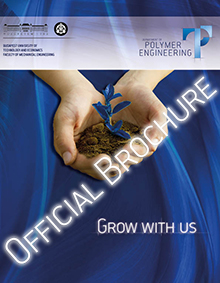Elektro-szálképzett termoplasztikus nanoszálak és kompozitjaik fejlesztése
Pályázati azonosító:
OTKA PD116122
Támogató:
Nemzeti Kutatási, Fejlesztési és Innovációs Hivatal (NKFIH)
Futamidő:
2015. szeptember 1. - 2018. augusztus 31.
Témavezető (BME):
Dr. Molnár Kolos
Résztvevő kutatók (BME):
Dr. Molnár Kolos
Pályázat összefoglalója
A nanoszálak olyan kisméretűek, hogy külön-külön szabad szemmel nem megfigyelhetők, mégis egyedülálló módon olyan összefüggő szerkezetet alkotnak (például fonal, vagy szövedék), amelyek feldolgozhatók hagyományos textilipari eljárásokkal, vagy akár szabad kézzel is. Számos olyan lehetséges alkalmazási területük van, – pl. textiltechnika, szűrők, gépalkatrészek, szenzorok, orvostechnikai eszközök – ahol egyedülálló tulajdonságaikat (hajlékonyság, szilárdság, nagy fajlagos felület) ki lehet aknázni. Egészségkárosító hatásuk nem ismeretes (nem rákkeltőek, nem okoznak szilikózist). Egyre nagyobb ipari igény mutatkozik a felhasználásukra, azonban számos olyan gyártástechnológiai probléma merül fel, ami miatt ez jelenleg csak korlátozottan lehetséges. A kutatás célja, hogy számítógépes modellezéssel, paraméterek optimálásával, mechanikai és mikroszkópi vizsgálatokon keresztül a szálképzési eljárás hatékonyságát növeljük. Emellett a gyártáskor a környezetbe jutó veszélyes és egészségre ártalmas oldószerek mennyiségét csökkenteni próbáljuk, illetve teljesen kiváltani azokat. A kutatás azt kívánja megalapozni, hogy később bárki számára megfizethető és elérhető nanoszál-alapú termékeket (például könnyű, de ütésálló burkolatok, szinte azonnal ható gyógyszerkészítmények stb.) lehessen előállítani.
Pályázat eredményei
1. munkaszakasz
2015. szeptember 1. - 2016. augusztus 31.
The first year of the project has successfully ended and most of the goals were completed. The achieved results are summarized in this report, while the details can be found in the related publications, including journal and conference papers and diploma theses.
1.1. Solvent-based high productivity device development and modeling
In the first year of the project, the previously developed and patented electrospinning device was further improved. The corona-electrospinning method [7] itself differs from the common and widely-used electrospinning method. Instead of using capillaries for fiber jet formation a small gap between two concentric parts, namely the ‘circular electrode’ and the ‘lid’ is applied. The solution is pumped through this gap and Taylor-cones, like small droplets, are formed from the contiguous meniscus, at equal distances due to electrostatic repulsion. This „needleless” droplet/fiber jet formation is unique and the formation characteristics is important for optimizing the technology. The key parameters of the technology that are influencing the process are related to the spinneret geometry, namely the angle of the outer concentric electrode, radius, gap distance, while material selection can also play an important role via their electric conductivity.
On the basis of finite element analysis the geometry was optimized [1,2,5] . 3D geometry models were made and finite element analysis was used to compare them. The effect of the materials was investigated and it turned out that the outer concentric electrode should be conductive, while the inner one (lid) is preferably made of an insulator (plastic). Then the geometry of the outer electrode was analyzed. In contrary to our expectations the sharpness of the edge (radius) has only a moderate effect on local electric field strength. The blunt electrode (fillet radius of edge 1 mm) has produced almost the same electric field as the sharp electrode (radius 0.1 mm). The taper angle (electrode ring is n
2. munkaszakasz
2016. szeptember 1. - 2017. augusztus 31.
ANNUAL REPORT
The second year of the current project (PD 116122) has been successfully ended and most of the planned goals were achieved. Besides that, new ideas have arisen during the implementation of the project leading to the elaboration of a more advanced electrospinning technology and two new prototypes. The achieved results are briefly summarized in this report, while more details can be found in the related publications, including journal and conference papers and diploma theses. The report follows the structure of the submitted workplan.
1.1. Solvent-based high productivity device development and modeling
The current research is partly based on a previously developed and patented electrospinning device. The corona-electrospinning method [8] was introduced in the former report. In this year the setup was further improved during the current OTKA research. The geometry was optimized by finite element analysis and the spinneret was re-designed. The new apparatus has the benefits of easy-to-adjust gap size and even easier cleaning and maintenance. In parallel with this development a new idea has arisen.
At electrospinning smaller viscosity solutions generally results decreased fiber diameters. It is mainly because the smaller resistance against the deformation allows higher stretching of the jet. Theoretically, smaller viscosity can facilitate Taylor-cone formation as well as smaller forces are required. Most of the polymer solutions show pseudoplastic behavior meaning that by inducing shear deformation their viscosity is decreased gradually. It means there is a chance to decrease the viscosity of the solution by inducing shear deformation. The new method is based on this idea: a thin gap is created between two metal surfaces and these have a continuous and rapid relative motion. The liquid between them continuously undergoes shearing [17,18].
Two small prototypes were designed and created this year on the basis of this idea. One of them works in axial,
Pályázat támogatásával megjelent közlemények
He H. J.,
Kara Y.,
Molnar K.: In Situ Viscosity-Controlled Electrospinning with a Low Threshold Voltage. Macromolecular Materials and Engineering,
304, 1900349/1-1900349/ (2019)
10.1002/mame.201900349 IF=3.853 Q1
Rothe S., Wendt E., Krzywinski S.,
Halász M.,
Bakonyi P., Tamás P., Bojtos A.: Investigation of Shear-Induced Deformation of Reinforcing Textiles by Optical Measurement Devices. Materials,
12, 1029/1-1029/18 (2019)
10.3390/ma12071029 IF=3.057 Q2
Molnár K.: Shear-aided annular needleless electrospinning. Materials Research Express,
6, 075304/1-075304/ (2019)
10.1088/2053-1591/ab11fd IF=1.929 Q3
Virág Á. D., Molnár K., Halász M.: Novel method for the investigation of the shear properties of glass fabric reinforcements,. in 'Aachen-Dresden-Denkendorf International Textile Conference, Drezda, Németország. 2019.11.28-2019.11.30 ,9 oldal, (2019)
He H.,
Kara Y.,
Molnár K.: Effect of needle characteristic on fibrous PEO produced by electrospinning. Resolution and Discovery,
4, 7-11 (2019)
10.1556/2051.2018.00063 Haijun H., Cheng-Kun L.,
Molnár K.: A Novel Needleless Electrospinning System Using a Moving Conventional Yarn as the Spinneret. Fibers and Polymers,
19, 1472-1478 (2018)
10.1007/s12221-018-8183-2 IF=1.439 Q1
Szabó E., Démuth B., Nagy B.,
Molnár K., Farkas A., Szabó B., Balogh A., Hirsch E., Nagy B., Marosi Gy., Nagy Zs. K.: Scaled-up preparation of drug-loaded electrospun polymer fibres and investigation of their continuous processing to tablet form. Express Polymer Letters,
12, 436-451 (2018)
10.3144/expresspolymlett.2018.37 IF=2.875 Q2
Tamás P., Halász M., Bakonyi P., Bojtos A., Wendt E., Krzywinski S.: Correlation between shearing behaviour and surface deformation. in 'Aachen-Dresden-Denkendorf International Textile Conference Drezda, Németország. 2016.11.24-2016.11.25., (2016)
© 2014 BME Polimertechnika Tanszék - Készítette: Dr. Romhány Gábor






